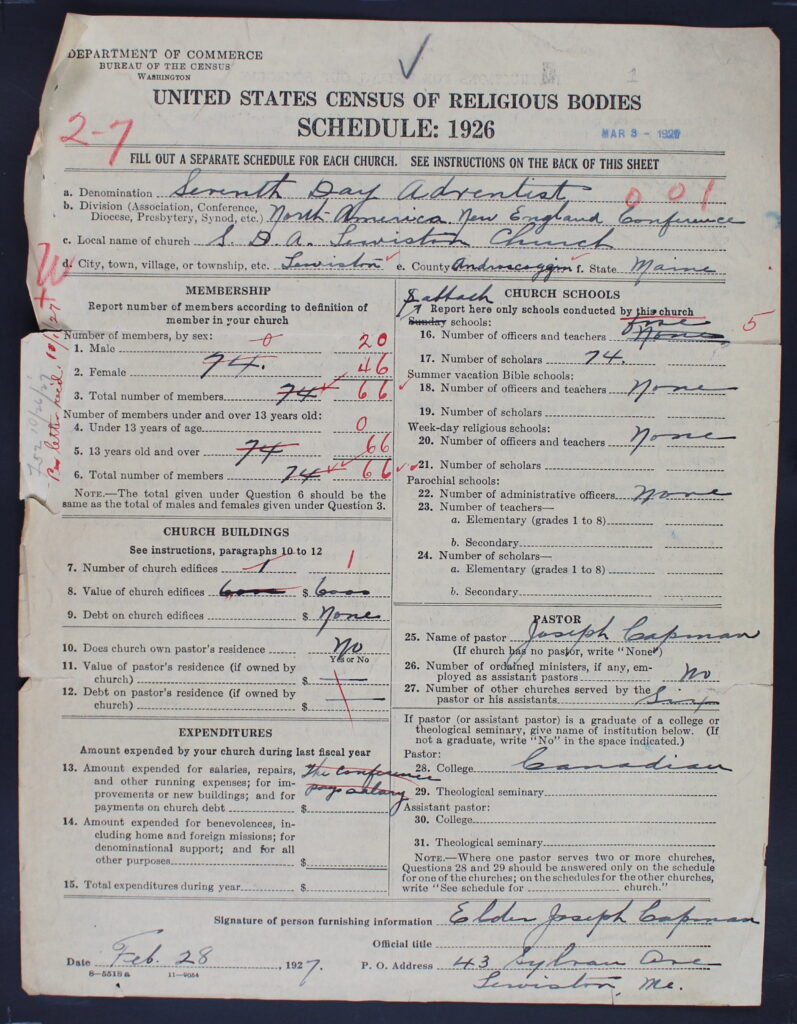American Religious Ecologies Receives Second NEH Grant to Work with 1926 Census of Religious Bodies
We are grateful to acknowledge a second NEH grant in support of our American Religious Ecologies project. The National Endowment for the Humanities announced this week that RRCHNM will receive a Humanities Collections and Reference Resources grant for $350,000 to continue our work with the 1926 Census of Religious Bodies for the next three years. This new grant follow on our previous award, also from the HCRR program in the NEH’s Division of Preservation and Access, which was received in 2019.
At the start of the twentieth century, Congress authorized the U.S. Census Bureau to survey the nation’s “religious bodies.” For five decades, the Bureau partnered with religious organizations to identify hundreds of thousands of individual congregations across the country. Though the Census Bureau conducted several censuses of religion, only for the 1926 Census of Religious Bodies are the original schedules, or forms, preserved.

These schedules are a rich source of information about American religious institutions in the early twentieth century. They contain a wealth of information about each congregation, including its membership by age and sex, its expenditures on buildings and missions, its minister’s name and whether he or she had gone to seminary, and its denominational affiliation, which the Census Bureau cataloged into 213 different groups. The schedules also include the location of the congregations, usually by county and city or town, and in many cases the street address as well.
Thanks to the previous support of the NEH, the American Religious Ecologies project team has already photographed many of the census schedules at the National Archives, despite the delays and closures caused by the COVID-19 pandemic. Those schedules are then cataloged by denomination and county and made publicly available. Using the NEH-supported DataScribe software created at RRCHNM, a team of researchers is also transcribing the schedules into datasets which can be analyzed and visualized.
“Thanks to the NEH’s continued support, we will be able to complete our digitization of the 1926 census, which is already well underway” said co-project director Lincoln Mullen. “Those schedules will be of interest to local historians, as well as to scholars of American religion. But just as important, we will be able to create datasets from these schedules which will be useful for understanding the demography and geography of American religion. And we will be able to fill in gaps for religious groups that the Census Bureau failed to count. Once completed, the 1926 census will be the single most comprehensive dataset for the study of American religion.”
A large team at RRCHNM, including thirty-nine different people over the course of the past several years, have been working on the 1926 census. A large number of those team members are students at GMU, who get hands-on experience learning how to work with historical sources and ways of thinking about the past. “Undergraduate, M.A., and Ph.D. students have been central to Religious Ecologies,” said co-project director John Turner. “They photograph census schedules, catalog batches of photographs, and prepare items for public display. Students have learned a variety of research skills, but they have also contributed to the project in many unexpected ways. They notice quirks in the ways that congregations recorded data and raise key questions about the procedures of the Census Bureau.”
You can see the work that the American Religious Ecologies team has already published at the project website. To follow the work, subscribe to RRCHNM’s newsletters, including the “Religion@RRCHNM” newsletter.
